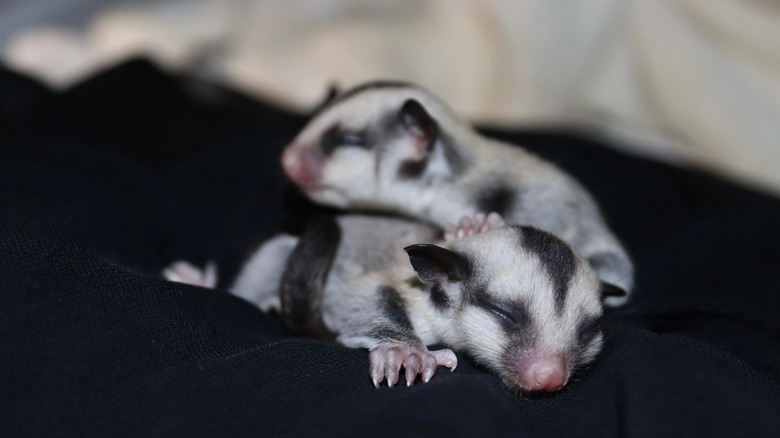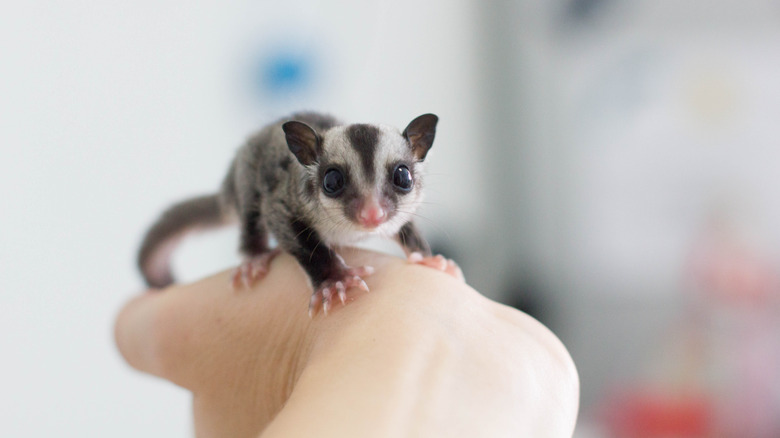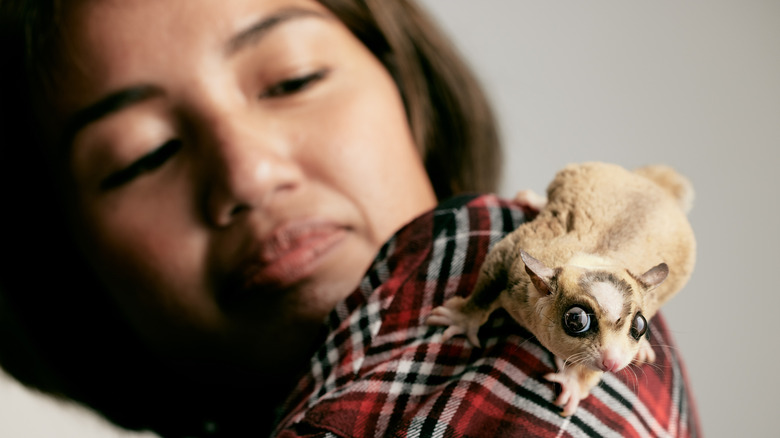How To Potty Train Your Sugar Glider
As social animals, sugar gliders require frequent interactions with their owners. Many pet parents will carry around these little mammals in their pockets or a special pouch to maximize quality time. Unfortunately, some surprise poop or pee from a sugar glider at an inopportune moment can put a real damper on this mode of bonding. While you won't be able to teach your companion to go to the bathroom in a litter box as you would a cat, many sugar gliders will take to potty training, helping you to steer clear of future accidents.
"They are very intelligent little animals, and they're extremely predictable," Dr. David M. Brust, DVM, explained on his YouTube channel, sugarglidervet. "Because of this, if you learn to read your animal's natural habits and practice a couple of simple conditioning exercises with them ... they can go with you almost anywhere and make great companion pets."
Consistency is key to training your sugar glider to use the bathroom
Dr. Brust explained that sugar gliders are clean animals by nature who will typically not pee or poop in their preferred sleeping location. As a result, much like humans, sugar gliders look to relieve themselves immediately upon awakening. "Understanding these two simple things are the foundation of training your baby and avoiding unnecessary accidents," advised Brust.
To potty train your sugar glider, you will need some newspaper and unscented baby wipes. With these materials ready to go next to their cage, you'll complete three steps whenever you remove your pet from its enclosure. First, pick up your sugar glider and hold it over the newspaper (if you'd prefer not to use newspaper, you can also hold them over a trash can or the sink). From there, use a clean baby wipe to stimulate urination and bowel movement by gently rubbing its bottom and genital area. It may help to massage its belly at the same time.
After it relieves itself, switch your sugar glider from hand to hand for a couple of minutes. This exercise will stimulate its digestive tract, ensuring all excrement and urine gets released. Finally, repeat the first step by rubbing its bottom again for about one minute. Never leave the process incomplete. Once they've finished using the bathroom, you can reward them with a favored activity, such as getting to snuggle up in your pocket, or a treat (just don't go overboard, as PetMD advises limiting treats to only 5% of their diet).
Stay on the lookout for signs that your sugar glider needs to relieve itself
As nocturnal animals, sugar gliders will spend most of the day sleeping, making it easy for them to ride around in your pocket for extended periods of time. According to Dr. Brust, they should not need to relieve themselves again for two to three hours (likely sooner if you provide them with food or water) after they go to the bathroom. Thankfully, it's pretty straightforward to tell when a sugar glider has to potty, allowing you to avoid most accidents, even while on the go.
If your sugar glider wakes up in your pocket or their designated pouch and starts to move or wiggle around, this is a good indicator that they need a bathroom break. Simply take them out, head to a sink, trashcan, or prepared newspaper and allow them to do their thing. It's also a good idea to keep some baby wipes on hand for easy cleanup in the event that you miss your sugar glider's potty signal, as no training method is foolproof.


